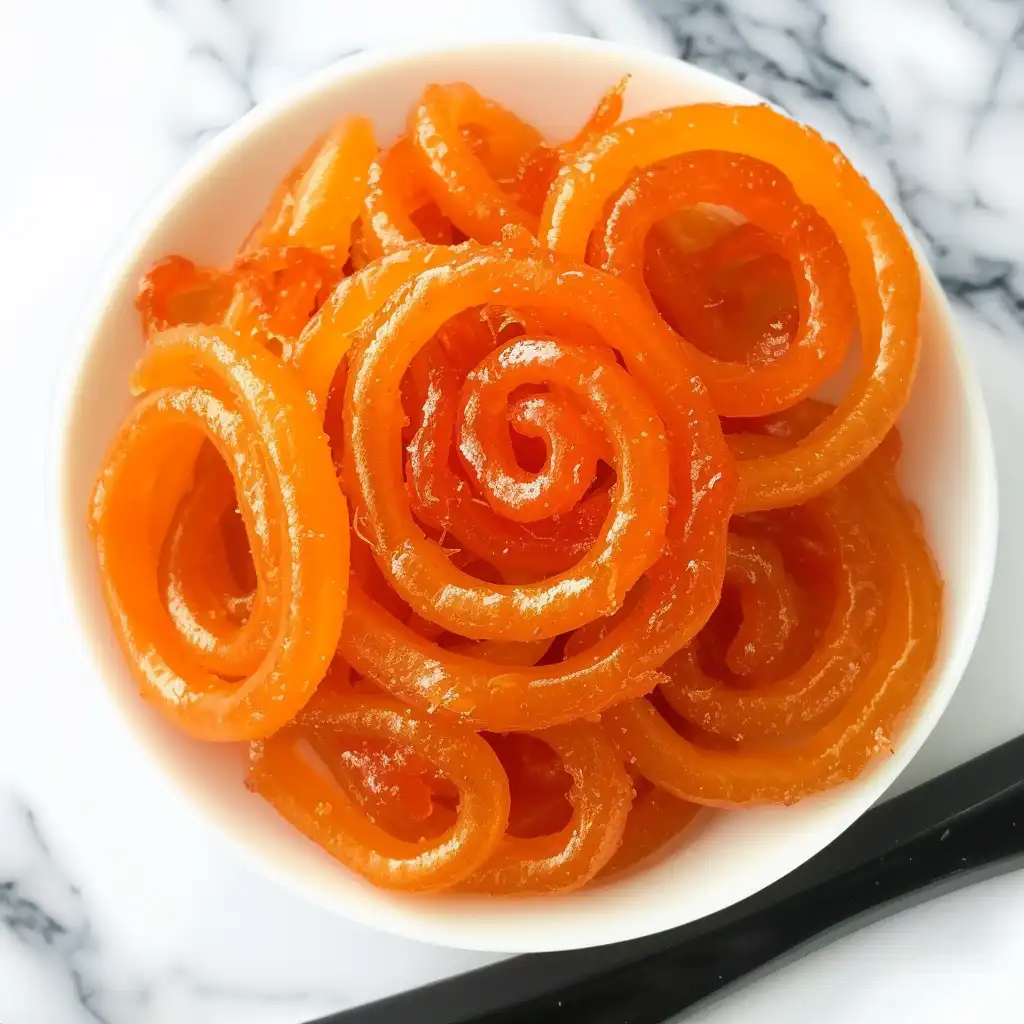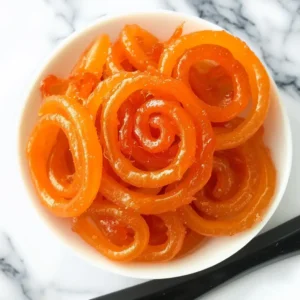
Jalebi, a delightful and syrupy Indian dessert, has been tantalizing taste buds for centuries. This delectable treat holds a special place in the hearts of millions, both in India and around the world. With its origins deeply rooted in the rich cultural heritage of the Indian subcontinent, jalebi has become an iconic sweet dish that embodies the essence of traditional Indian cuisine.
The history of jalebi can be traced back to ancient times, where it was known as “Jalavallika” in Sanskrit literature. This sugary delight was believed to have been introduced to India by Persian invaders during the medieval period.
Over time, jalebi underwent various transformations and adaptations, evolving into the beloved dessert we know today.
The process of making jalebi is an art in itself, requiring precision and skill. The recipe involves creating a fermented batter with all-purpose flour, yogurt, and a pinch of turmeric for that vibrant golden hue.
This mixture is then piped into hot oil in intricate circular patterns, resulting in crispy spirals that are later soaked in a luscious sugar syrup infused with cardamom and saffron. The combination of crispy and syrupy textures makes each bite of jalebi a heavenly experience for the senses.
While jalebi may seem daunting to prepare at first glance, with practice and patience, anyone can master this culinary masterpiece. The key lies in achieving the perfect consistency of the batter and maintaining the right temperature while frying.
Once you’ve mastered these techniques, you’ll be able to create jalebis that rival those found in the bustling streets of India.
Whether enjoyed as a dessert after a hearty meal or savored as a sweet indulgence during festive celebrations, jalebi never fails to leave a lasting impression. Its irresistible aroma and mouthwatering taste have made it a beloved treat for generations.
Plain Flour: Plain flour, also known as all-purpose flour, is a versatile ingredient commonly used in baking. It is made from wheat and has a moderate protein content. Plain flour provides structure to baked goods and helps them hold their shape. It is a staple ingredient in many recipes, including Jalebi.
Baking Powder: Baking powder is a leavening agent that helps baked goods rise. It is a combination of an acid (usually cream of tartar) and a base (usually baking soda). When mixed with moisture and heat, baking powder releases carbon dioxide gas, creating bubbles that make the dough or batter rise. In Jalebi, baking powder contributes to the light and fluffy texture of the final product.
Baking Soda: Baking soda, also known as sodium bicarbonate, is another leavening agent commonly used in baking. It reacts with acidic ingredients (such as yogurt or lemon juice) to produce carbon dioxide gas, which helps the dough or batter rise. Baking soda also contributes to the browning of the Jalebi during frying.
Yogurt: Yogurt is a fermented dairy product that adds moisture and tanginess to recipes. In Jalebi, yogurt acts as a tenderizer and helps create a soft and fluffy texture. It also adds a subtle tangy flavor to balance the sweetness of the dish.
Food Colouring: Food coloring is an optional ingredient used to enhance the visual appeal of Jalebi. It adds vibrant hues to the batter, giving the final product an attractive appearance. Food coloring comes in various forms, such as liquid, gel, or powder, and can be chosen according to personal preference.
Sugar: Sugar is a sweetening agent used to add sweetness to Jalebi. It provides the necessary sweetness to balance the flavors and enhances the overall taste of the dish. Different types of sugar can be used, such as granulated sugar or powdered sugar, depending on the desired texture and sweetness level.
Lemon: Lemon is a citrus fruit commonly used for its juice and zest in cooking and baking. In Jalebi, lemon juice adds a tangy flavor and acidity to balance the sweetness. It also helps activate the baking soda, contributing to the leavening process and ensuring a light and airy texture.
When it comes to serving jalebi, there are various options that can enhance the flavors and create a delightful experience. Here are some serving suggestions and pairings to consider:
Experiment with these serving suggestions and pairings to find your favorite way to enjoy jalebi. Whether you prefer it as a breakfast item, dessert, or snack, jalebi is sure to satisfy your sweet cravings.
Jalebi is a popular Indian sweet dish made by deep-frying a wheat flour batter in pretzel or circular shapes. It is then soaked in sugar syrup, resulting in a crispy and syrupy dessert.
To prepare Jalebi, a batter is made by mixing wheat flour, yogurt, and water. This batter is fermented for a few hours. The fermented batter is then poured into a squeeze bottle or a cloth cone with a small hole at the bottom. The batter is squeezed into hot oil in circular or pretzel shapes and deep-fried until golden and crispy. Finally, the fried Jalebis are soaked in sugar syrup.
Jalebi has a unique taste that combines sweetness, slight tanginess, and a crispy texture. The fried batter becomes crunchy on the outside, while the inside remains soft and syrupy due to the sugar syrup soaking.
Traditional Jalebi recipes are usually vegan as they do not contain any animal-based ingredients. However, it is always recommended to check the specific recipe or ask the vendor about the ingredients used, as variations may exist.
While traditional Jalebi recipes use wheat flour, it is possible to make gluten-free versions using alternative flours such as rice flour or chickpea flour. These variations may have slightly different textures and flavors compared to the traditional Jalebi.
Jalebi is typically served hot or warm. It can be enjoyed on its own as a dessert or paired with other Indian sweets like Rabri (thickened sweetened milk) or served alongside savory snacks like Samosas. Some people also enjoy Jalebi with a scoop of ice cream.
Jalebi is best consumed fresh, preferably on the day it is made. However, if stored properly in an airtight container, it can stay fresh for up to 2-3 days at room temperature. Reheating Jalebi in an oven or microwave for a short time can help restore its crispiness.
Here are some more recipes for you to enjoy! If you my recipes don’t forget to rate and leave a comment.
If you have any recipe suggestions, please do not hesitate to ask me. A great way to stay in contact with me is through Instagram, Facebook, Twitter and YouTube. Don’t forget to tag me @CookwithNabeela in your recipe photos!

Subscribe now to receive my latest recipes directly in your inbox. Stay up-to-date and never miss out!

I love to cook! I want to share with you my favourite, delicious family-friendly recipes. I want to inspire you to create fantastic food for your family every day.
Add your first comment to this post